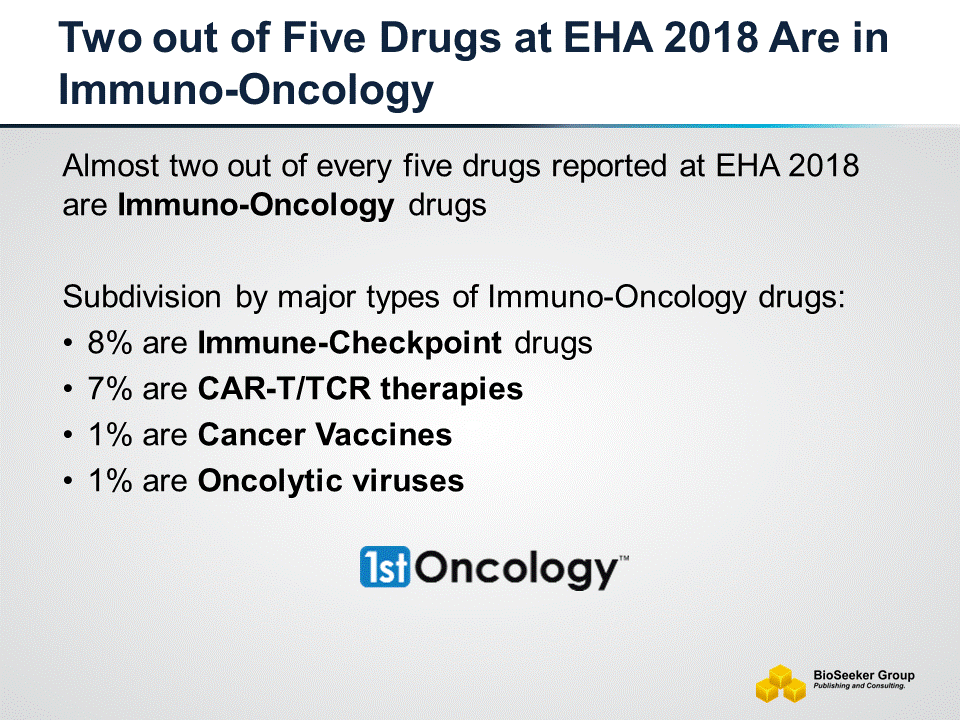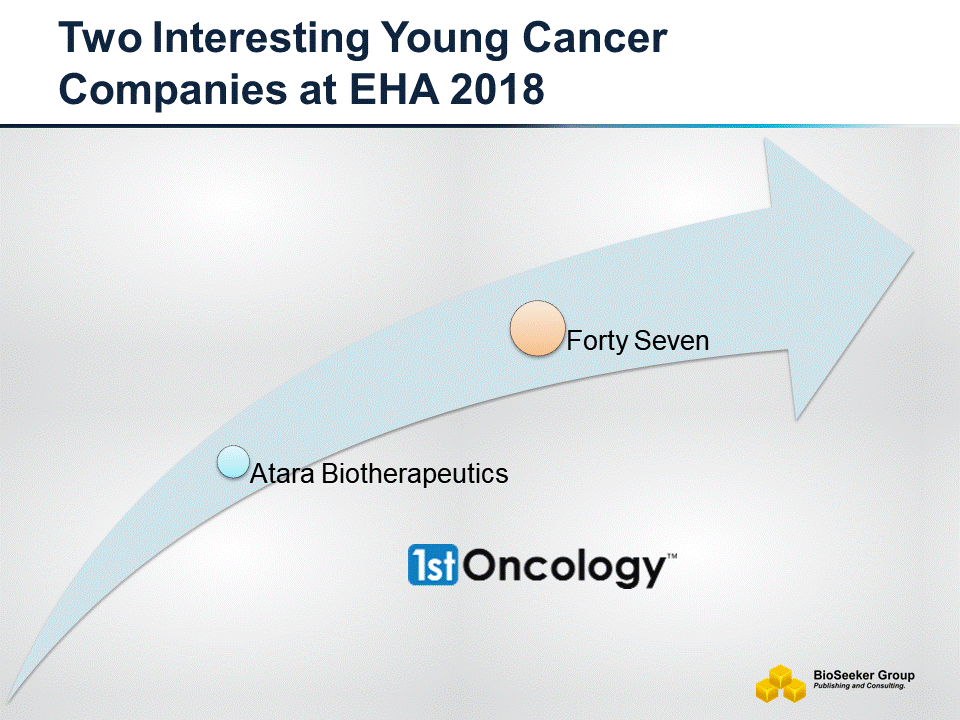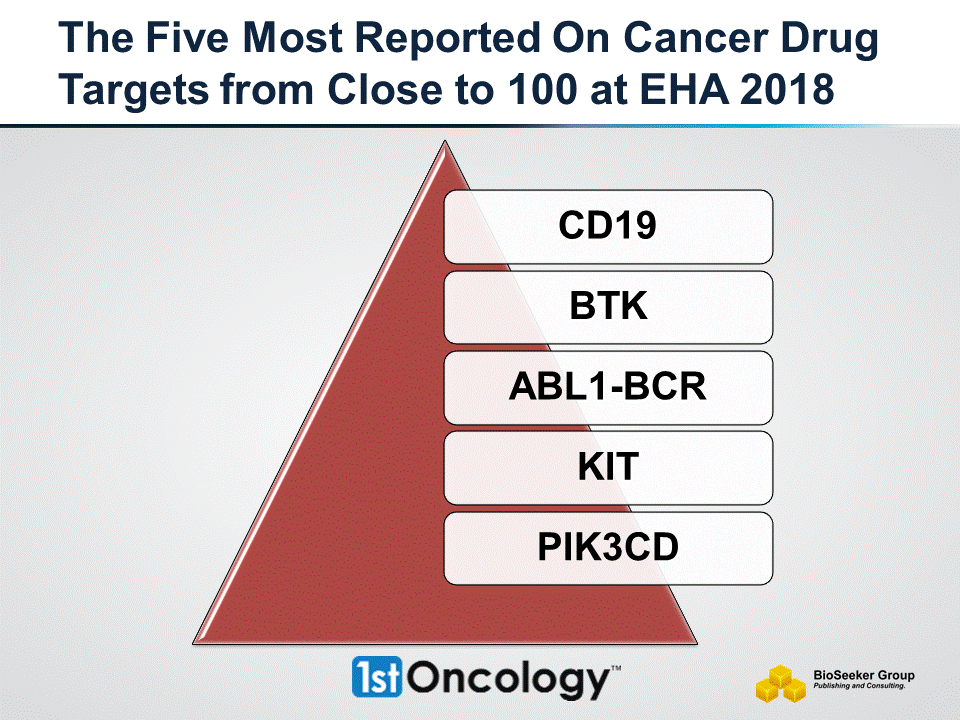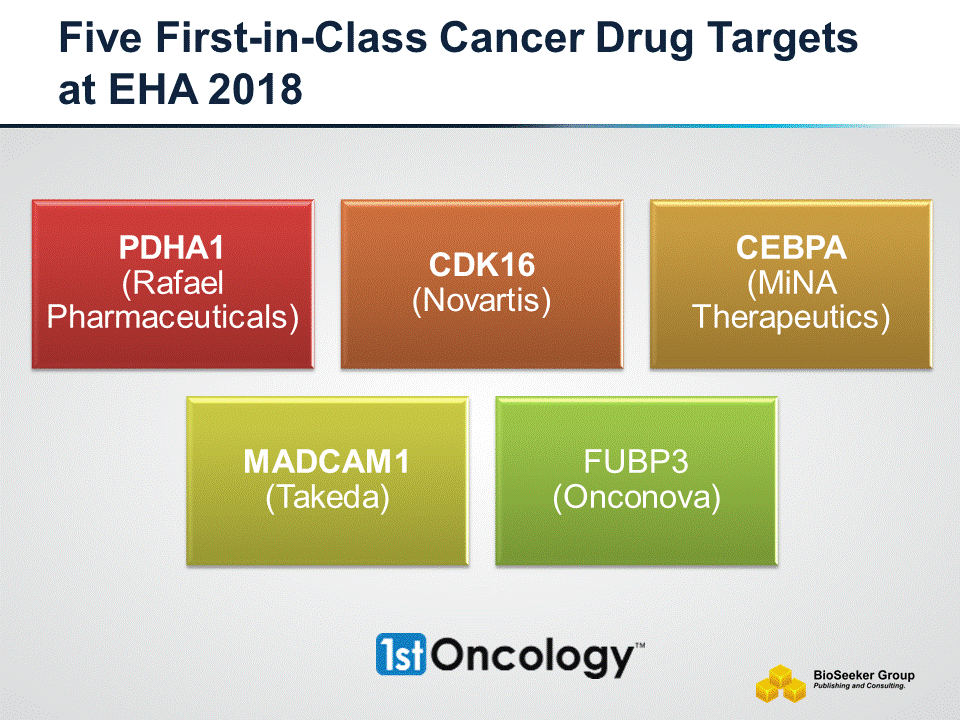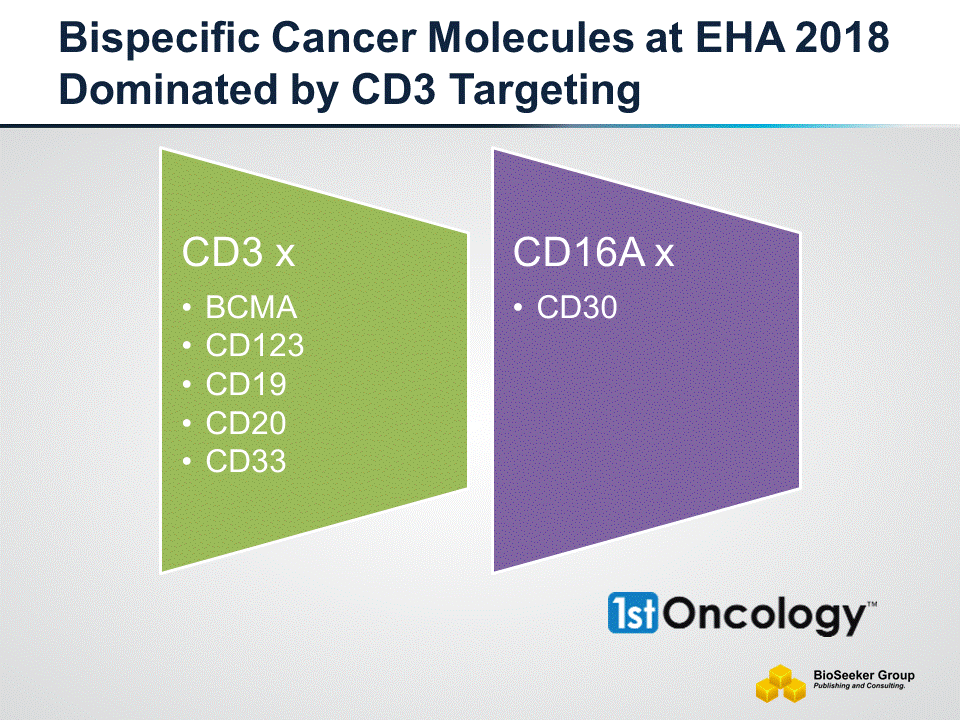On June 18, 2018 Array BioPharma Inc. (Nasdaq: ARRY) reported that it will present updated safety and efficacy results, including overall survival (OS) data, from the safety lead-in of the Phase 3 BEACON CRC trial evaluating the triplet combination of encorafenib, a BRAF inhibitor, binimetinib, a MEK inhibitor and cetuximab, an anti-EGFR antibody, in patients with BRAF-mutant colorectal cancer (CRC) (Press release, Array BioPharma, JUN 18, 2018, View Source [SID1234527431]). These data will be featured in an oral presentation on Saturday, June 23, at the ESMO (Free ESMO Whitepaper) 20thWorld Congress on Gastrointestinal Cancer in Barcelona, Spain.
Schedule your 30 min Free 1stOncology Demo!
Discover why more than 1,500 members use 1stOncology™ to excel in:
Early/Late Stage Pipeline Development - Target Scouting - Clinical Biomarkers - Indication Selection & Expansion - BD&L Contacts - Conference Reports - Combinatorial Drug Settings - Companion Diagnostics - Drug Repositioning - First-in-class Analysis - Competitive Analysis - Deals & Licensing
Schedule Your 30 min Free Demo!
Oral Presentation BEACON CRC Safety Lead-In
Title:
BEACON CRC Study Safety Lead-in: Assessment of the BRAF Inhibitor Encorafenib + MEK Inhibitor Binimetinib + Anti–Epidermal Growth Factor Receptor Antibody Cetuximab for BRAFV600E Metastatic Colorectal Cancer
Presenter:
Eric Van Cutsem, M.D., Professor, Internal Medicine, Head, Digestive Oncology Unit, University Hospital Gasthuisberg, Leuven
Abstract:
O-027
Session:
Session XX
Date:
Saturday, June 23
Session Time:
11:40 a.m. – 12:20 p.m. CET (5:40 – 6:20 a.m. ET)
Location:
Auditorium A
Following the presentation, the slides will be available as a PDF on Array’s website at www.arraybiopharma.com.
Array will host an encore webcast presentation of the BEACON CRC safety lead-in trial data.
Encore Investor Webcast:
Presenter:
Axel Grothey, M.D., Division of Hematology/Oncology, Mayo Clinic
Date:
Saturday, June 23
Time:
4:30 pm CET (10:30 am ET)
Toll-Free:
(844) 464-3927
Toll:
(765) 507-2598
Pass Code:
8588348
Webcast, including replay and conference call slides:View Source
About Colorectal Cancer
Worldwide, colorectal cancer is the third most common type of cancer in men and the second most common in women, with approximately 1.4 million new diagnoses in 2012. Globally in 2012, approximately 694,000 deaths were attributed to colorectal cancer. [1] In the U.S. alone, an estimated 140,250 patients will be diagnosed with cancer of the colon or rectum in 2018, and approximately 50,000 are estimated to die of their disease. [2] In the U.S., BRAF mutations are estimated to occur in 10% to 15% of patients with colorectal cancer and represent a poor prognosis for these patients. [3, 4, 5, 6] The risk of mortality in CRC patients with the BRAFV600E mutation is more than two times higher than for those with wild-type BRAF. [7] Several approved standard of care benchmarks for this population range between 4% to 8% ORR, 1.8 and 2.5 months mPFS and 4 and 6 months mOS. [8, 9, 10, 11, 12, 13, 14] Based on recent prospective historical data, the prevalence of MSI-H in tumors from patients with metastatic BRAF-mutant CRC ranged from 14% in a recent Phase 1b/2 trial (NCT01719380) (Array, data on file) to 18% in a recent Southwestern Oncology Group (SWOG) randomized phase 2 trial. [8]
About BEACON CRC
BEACON CRC is a randomized, open-label, global trial evaluating the efficacy and safety of encorafenib, binimetinib and cetuximab in patients with BRAF-mutant metastatic CRC whose disease has progressed after one or two prior regimens. BEACON CRC is the first and only Phase 3 trial designed to test a BRAF/MEK combo targeted therapy in BRAF-mutant advanced CRC. Thirty patients were treated in the safety lead-in and received the triplet combination (encorafenib 300 mg daily, binimetinib 45 mg twice daily and cetuximab per label). Of the 30 patients, 29 had a BRAFV600E mutation. Microsatellite instability-high (MSI-H), resulting from defective DNA mismatch repair, was detected in only 1 patient. As previously announced, the triplet combination demonstrated good tolerability, supporting initiation of the randomized portion of the trial.
The randomized portion of the BEACON CRC trial is designed to assess the efficacy of encorafenib in combination with cetuximab with or without binimetinib compared to cetuximab and irinotecan-based therapy. Approximately 615 patients are expected to be randomized 1:1:1 to receive triplet combination, doublet combination (encorafenib and cetuximab) or the control arm (irinotecan-based therapy and cetuximab). The primary endpoint of the trial is overall survival of the triplet combination compared to the control arm. Secondary endpoints address efficacy of the doublet combination compared to the control arm, and the triplet combination compared to the doublet therapy. Other secondary endpoints include PFS, ORR, duration of response, safety and tolerability. Health related quality of life data will also be assessed. The trial is being conducted at over 200 investigational sites in North America, South America, Europe and the Asia Pacific region. Patient enrollment is expected to be completed in 2018.
About Encorafenib and Binimetinib
BRAF and MEK are key protein kinases in the MAPK signaling pathway (RAS-RAF-MEK-ERK). Research has shown this pathway regulates several key cellular activities including proliferation, differentiation, survival and angiogenesis. Inappropriate activation of proteins in this pathway has been shown to occur in many cancers, including melanoma and colorectal cancer. Encorafenib is a late-stage small molecule BRAF inhibitor and binimetinib is a late-stage small molecule MEK inhibitor, both of which target key enzymes in this pathway. Encorafenib and binimetinib are being studied in clinical trials in advanced cancer patients, including the Phase 3 BEACON CRC trial and the Phase 3 COLUMBUS trial.
The U.S. Food and Drug Administration (FDA) is currently reviewing the New Drug Applications (NDAs) to support use of the combination of encorafenib and binimetinib for the treatment of patients with BRAFV600E or K-mutant advanced, unresectable or metastatic melanoma. The FDA set a target action date under the Prescription Drug User Fee Act (PDUFA) of June 30, 2018 for both applications. The European Medicines Agency (EMA), as well as the Swiss Medicines Agency (Swissmedic) and the Australian Therapeutic Goods Administration (TGA), are reviewing the Marketing Authorization Applications (MAAs) submitted by Pierre Fabre and Japan’s Pharmaceuticals and Medical Devices Agency (PMDA) has accepted the Manufacturing and Marketing Approval (MMA) applications submitted by Ono Pharmaceutical Co, Ltd.
Encorafenib and binimetinib are investigational medicines and are not currently approved in any country.
Array BioPharma has exclusive rights to encorafenib and binimetinib in the U.S. and Canada. Array has granted Ono Pharmaceutical exclusive rights to commercialize both products in Japan and South Korea and Pierre Fabre exclusive rights to commercialize both products in all other countries, including Europe, Asia and Latin America. The BEACON CRC trial is being conducted with support from Pierre Fabre and Merck KGaA, Darmstadt, Germany (support is for sites outside of North America).
